Abstract
1. We investigated the effect of a long-term stretching regimen on the tissue properties and stretch tolerance of human skeletal muscle. 2. Resistance to stretch was measured as torque (in N m) offered by the hamstring muscle group during passive knee extension while electromyographic (EMG) activity, knee joint angle and velocity were continuously monitored during a standardized stretch manoeuvre. Seven healthy subjects were tested before and after a 3 week training period using two separate protocols. Protocol 1 consisted of a slow stretch at 0.087 rad s-1 to a predetermined angle followed by a 90 s holding phase. Subjects were brought to the same angle before and after the training period. Protocol 2 was a similar stretch, but continued to the point of pain. 3. During protocol 1 the torque rose during the stretch and then declined during the holding phase. EMG activity was small and did not change significantly during the protocol. No significant differences in stiffness, energy and peak torque about the knee joint were seen as a result of the training. During protocol 2 the angle to which the knee could be extended was significantly increased as a result of the training. This was accompanied by a comparable increase in peak torque and energy. EMG activity was small and not affected by training. 4. It is concluded that reflex EMG activity does not limit the range of movement during slow stretches and that the increased range of motion achieved from training is a consequence of increased stretch tolerance on the part of the subject rather than a change in the mechanical or viscoelastic properties of the muscle.
Full text
PDF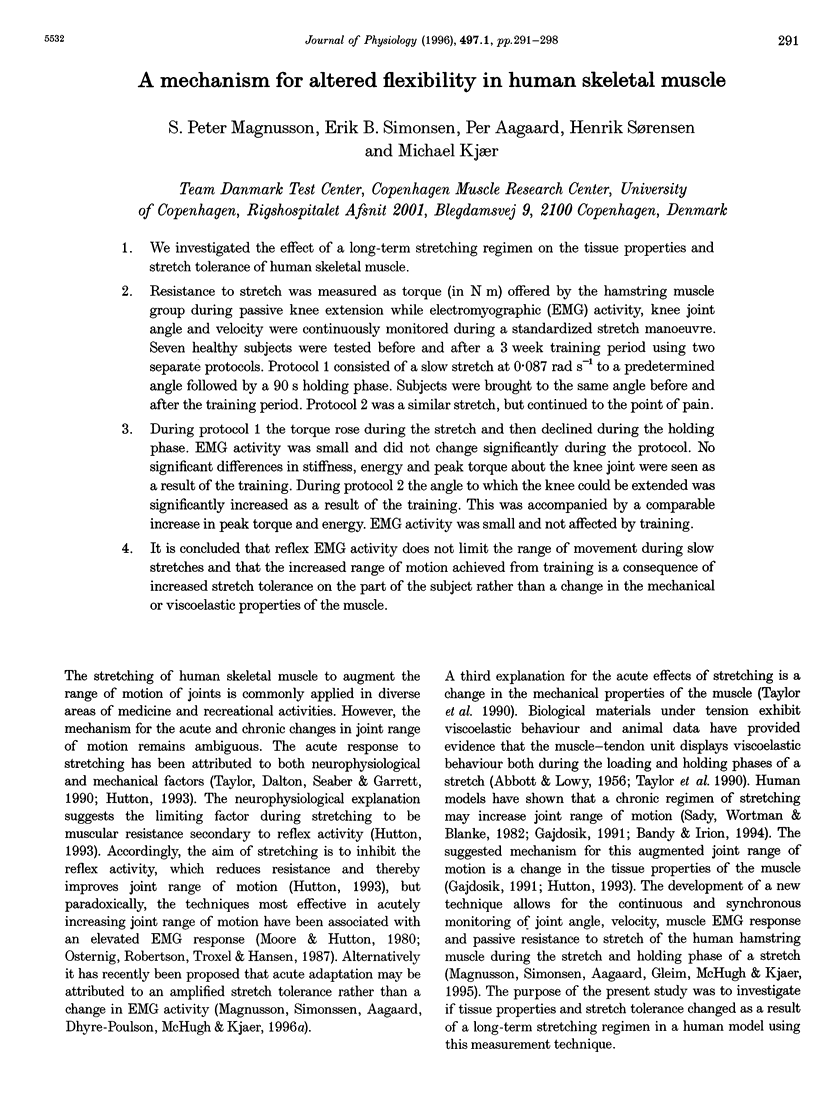
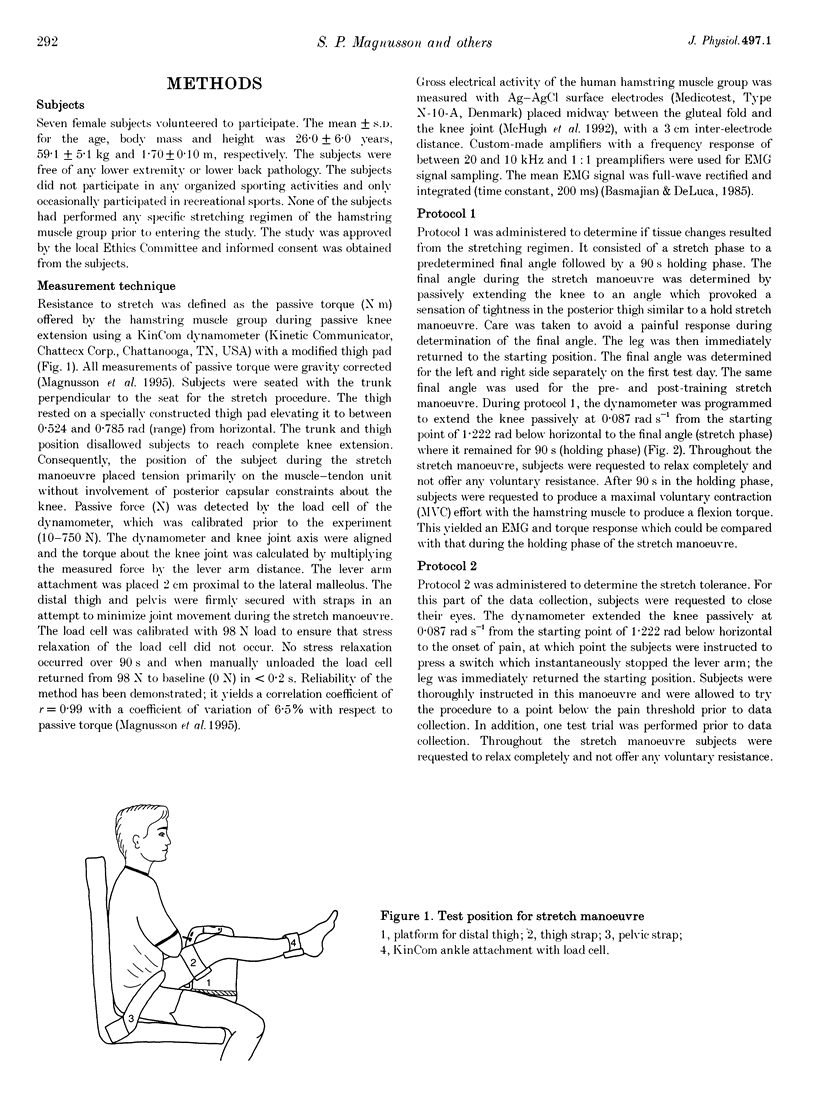
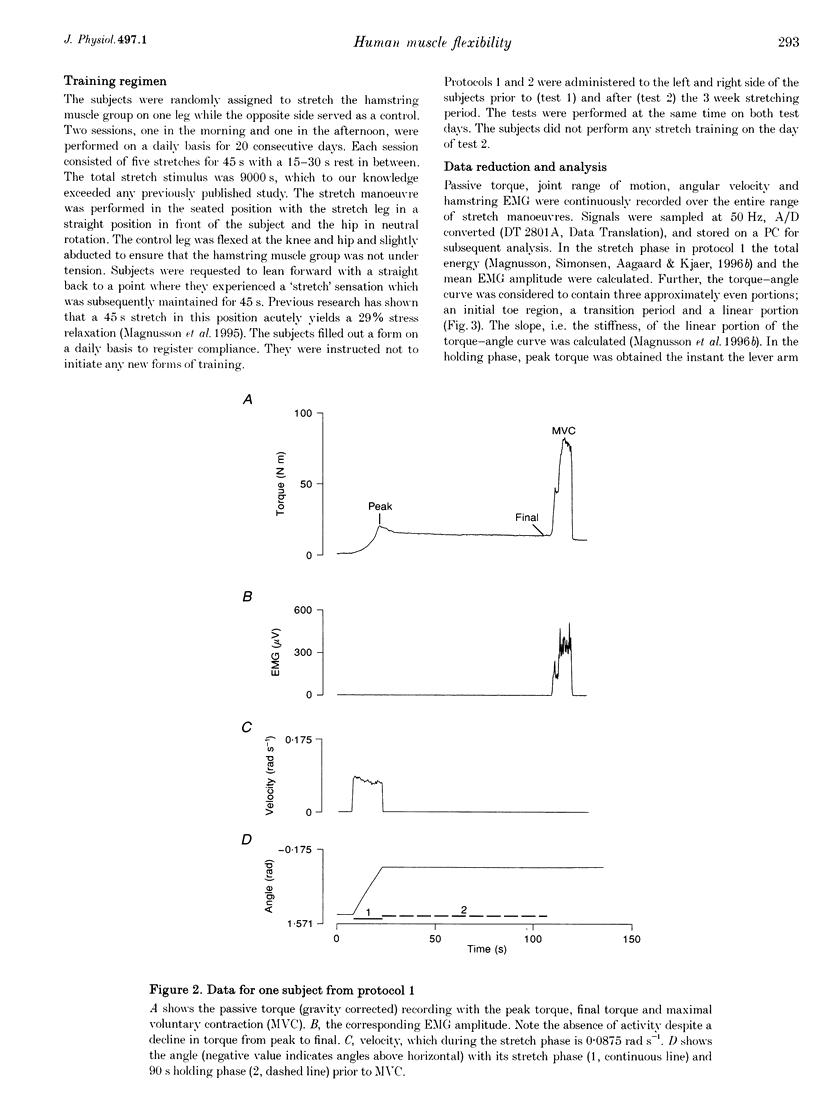
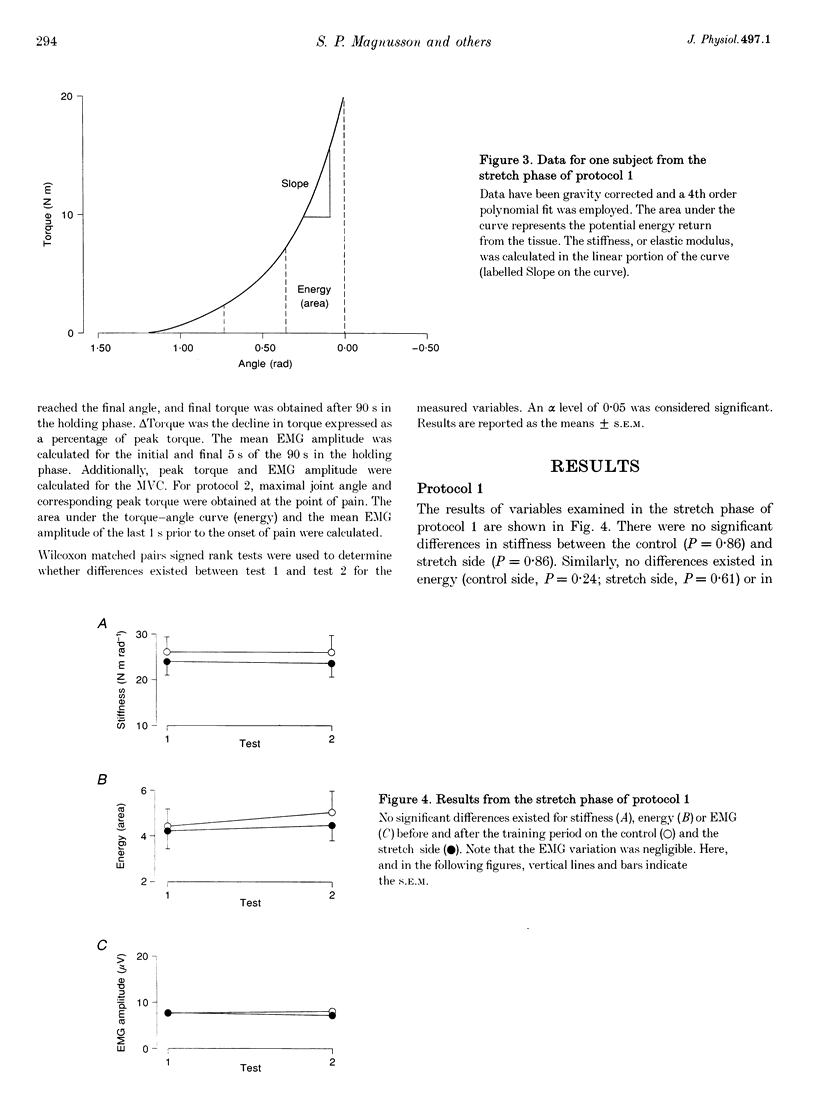
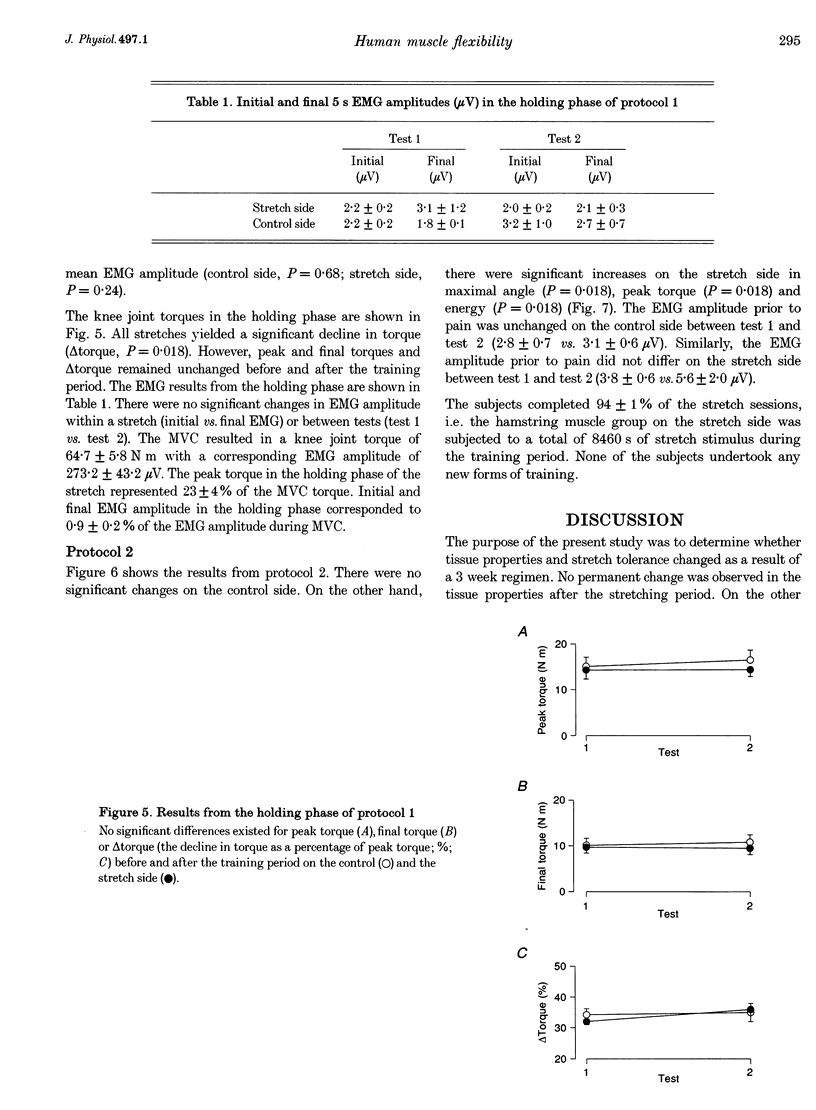
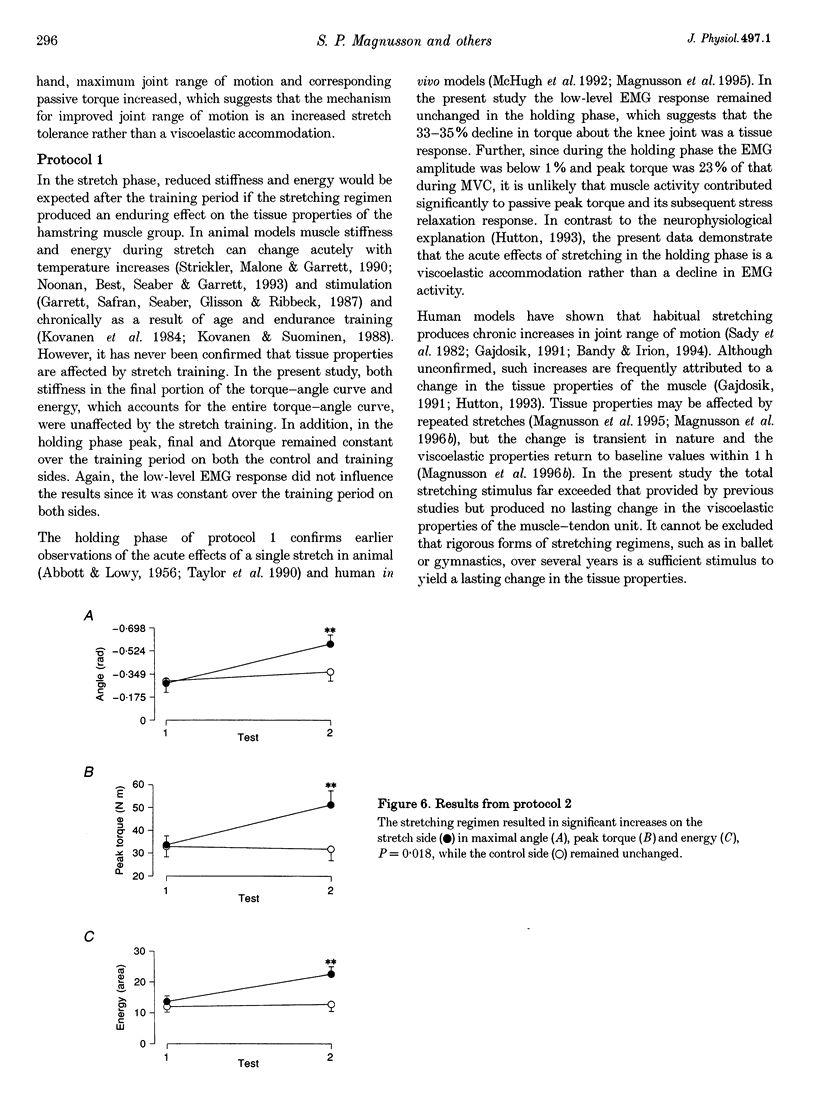
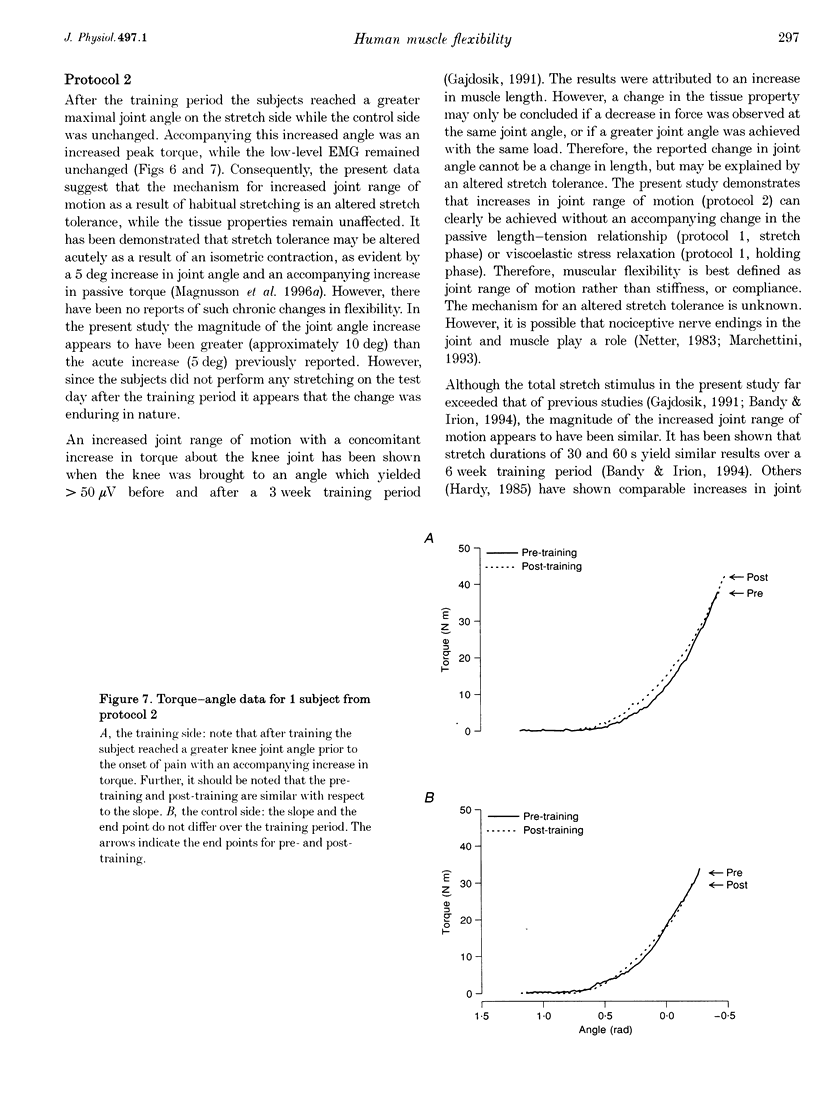
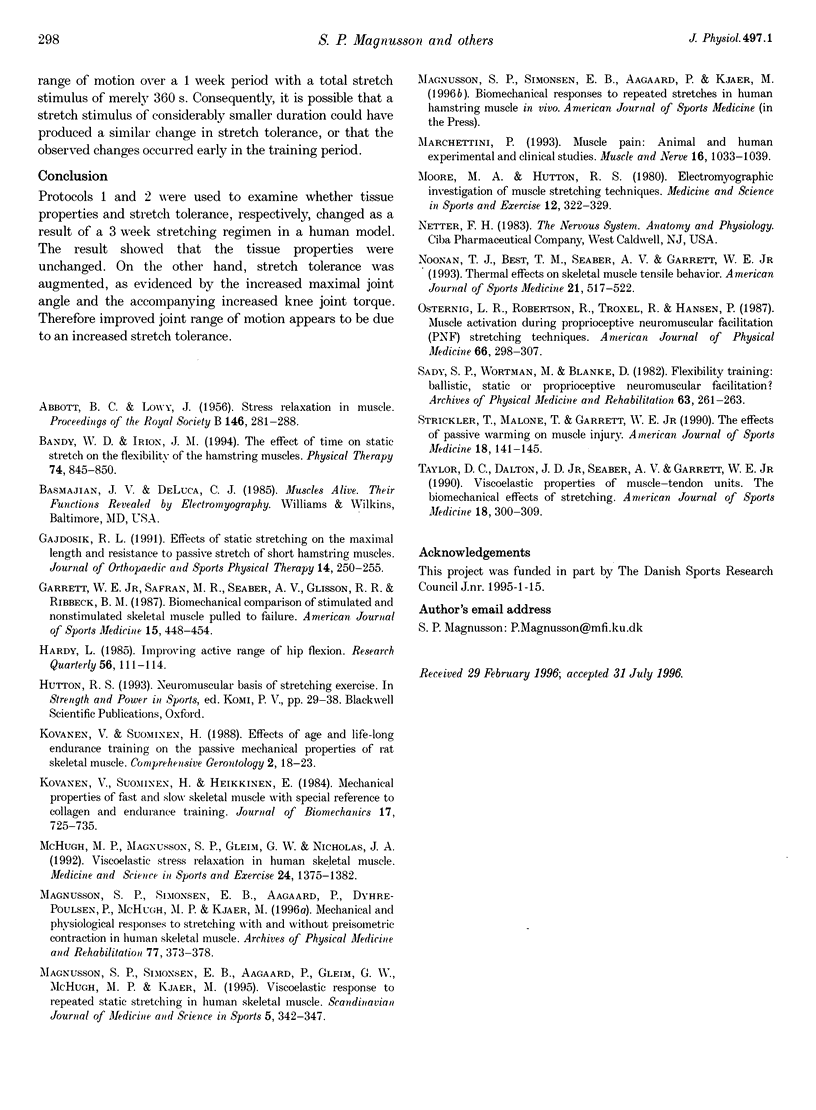
Selected References
These references are in PubMed. This may not be the complete list of references from this article.
- ABBOTT B. C., LOWY J. Stress relaxation in muscle. Proc R Soc Lond B Biol Sci. 1956 Mar 26;146(923):281–288. doi: 10.1098/rspb.1957.0011. [DOI] [PubMed] [Google Scholar]
- Bandy W. D., Irion J. M. The effect of time on static stretch on the flexibility of the hamstring muscles. Phys Ther. 1994 Sep;74(9):845–852. doi: 10.1093/ptj/74.9.845. [DOI] [PubMed] [Google Scholar]
- Garrett W. E., Jr, Safran M. R., Seaber A. V., Glisson R. R., Ribbeck B. M. Biomechanical comparison of stimulated and nonstimulated skeletal muscle pulled to failure. Am J Sports Med. 1987 Sep-Oct;15(5):448–454. doi: 10.1177/036354658701500504. [DOI] [PubMed] [Google Scholar]
- Kovanen V., Suominen H. Effects of age and life-long endurance training on the passive mechanical properties of rat skeletal muscle. Compr Gerontol A. 1988 Feb;2(1):18–23. [PubMed] [Google Scholar]
- Kovanen V., Suominen H., Heikkinen E. Mechanical properties of fast and slow skeletal muscle with special reference to collagen and endurance training. J Biomech. 1984;17(10):725–735. doi: 10.1016/0021-9290(84)90103-9. [DOI] [PubMed] [Google Scholar]
- Magnusson S. P., Simonsen E. B., Aagaard P., Dyhre-Poulsen P., McHugh M. P., Kjaer M. Mechanical and physical responses to stretching with and without preisometric contraction in human skeletal muscle. Arch Phys Med Rehabil. 1996 Apr;77(4):373–378. doi: 10.1016/s0003-9993(96)90087-8. [DOI] [PubMed] [Google Scholar]
- Magnusson S. P., Simonsen E. B., Aagaard P., Gleim G. W., McHugh M. P., Kjaer M. Viscoelastic response to repeated static stretching in the human hamstring muscle. Scand J Med Sci Sports. 1995 Dec;5(6):342–347. doi: 10.1111/j.1600-0838.1995.tb00056.x. [DOI] [PubMed] [Google Scholar]
- McHugh M. P., Magnusson S. P., Gleim G. W., Nicholas J. A. Viscoelastic stress relaxation in human skeletal muscle. Med Sci Sports Exerc. 1992 Dec;24(12):1375–1382. [PubMed] [Google Scholar]
- Moore M. A., Hutton R. S. Electromyographic investigation of muscle stretching techniques. Med Sci Sports Exerc. 1980;12(5):322–329. [PubMed] [Google Scholar]
- Noonan T. J., Best T. M., Seaber A. V., Garrett W. E., Jr Thermal effects on skeletal muscle tensile behavior. Am J Sports Med. 1993 Jul-Aug;21(4):517–522. doi: 10.1177/036354659302100407. [DOI] [PubMed] [Google Scholar]
- Osternig L. R., Robertson R., Troxel R., Hansen P. Muscle activation during proprioceptive neuromuscular facilitation (PNF) stretching techniques. Am J Phys Med. 1987 Oct;66(5):298–307. [PubMed] [Google Scholar]
- Sady S. P., Wortman M., Blanke D. Flexibility training: ballistic, static or proprioceptive neuromuscular facilitation? Arch Phys Med Rehabil. 1982 Jun;63(6):261–263. [PubMed] [Google Scholar]
- Strickler T., Malone T., Garrett W. E. The effects of passive warming on muscle injury. Am J Sports Med. 1990 Mar-Apr;18(2):141–145. doi: 10.1177/036354659001800206. [DOI] [PubMed] [Google Scholar]
- Taylor D. C., Dalton J. D., Jr, Seaber A. V., Garrett W. E., Jr Viscoelastic properties of muscle-tendon units. The biomechanical effects of stretching. Am J Sports Med. 1990 May-Jun;18(3):300–309. doi: 10.1177/036354659001800314. [DOI] [PubMed] [Google Scholar]


